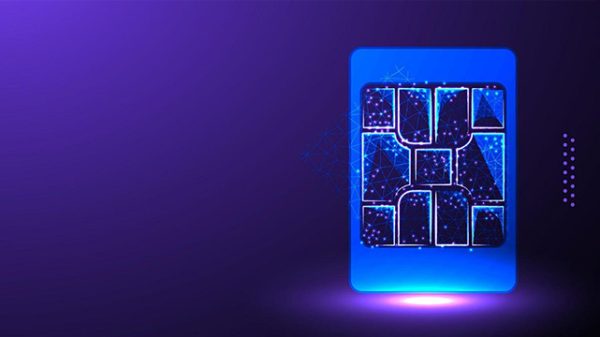For the best performance in IoT fleet applications, native mobile development is unmatched. To ensure your fleet management app works flawlessly across both platforms, you can hire Kotlin developer to build an Android fleet app and bring a Swift developer on board for an iOS version.
Consistently recognized as one of the top software development companies on Clutch, the Volpis team has spent years providing custom fleet management software development services with Kotlin and Swift to businesses worldwide. In this article, we’ll explore how IoT powers fleet management apps and why native mobile development with Kotlin and Swift outperforms cross-platform framework when building IoT-powered fleet apps.
Two Core IoT Components in Fleet Management Systems
If you want to bring IoT into your fleet management system, it’s important to understand the core parts that make everything work. Let’s look at the must-have IoT components for any modern fleet setup:
1. Telematics Devices
Telematics devices are the backbone of IoT in fleet management. They collect and send data about each vehicle’s condition, location, and how it’s being driven. These devices connect directly to the vehicle’s systems (like the OBD-II port or CAN bus), giving you access to detailed data in real time.
What telematics devices do:
GPS Tracking: Shows where each vehicle is and where it’s headed. This helps with live tracking, better routing, and accurate arrival estimates.
Vehicle Diagnostics: Keeps an eye on things like engine health, battery charge, and fluid levels. You’ll get alerts before problems turn into breakdowns.
Driver Behavior Monitoring: Tracks things like speeding, hard braking, and idling. This helps improve safety and cut down on risky driving habits.
Fuel Monitoring: Logs how much fuel is being used and helps spot waste, like unnecessary idling or poor route planning.
By using telematics with your fleet management software, you can automate tasks like dispatching, maintenance alerts, and compliance tracking.
2. Sensors
Sensors take fleet monitoring even further. While telematics give you a broad view, sensors focus on specific things—like tire pressure or cargo temperature. They give you more detailed insights to help protect your vehicles and cargo.
Common types of sensors in fleet management:
Tire Pressure Sensors (TPMS): Alert you when tire pressure drops. Keeping tires at the right pressure improves safety, saves fuel, and extends tire life.
Temperature and Humidity Sensors: Key for cold-chain fleets, these monitor cargo conditions. If temperatures go out of range, you get an alert right away.
Engine Sensors: Watch over oil, coolant, and exhaust. They help you catch engine problems early and keep maintenance proactive.
Cargo Sensors: Track cargo weight, movement, and security. Great for making sure goods are safe and reducing theft or damage.
When you combine sensor data with telematics, you get a complete view of your fleet’s health and performance—leading to fewer surprises and better control.
Top 10 Use Cases of IoT in Fleet Management
IoT is changing the game for fleet management by turning vehicles into connected, data-driven assets. Here are 10 practical ways IoT is making fleets smarter, safer, and more efficient.
1. Real-Time Vehicle Tracking
IoT devices with GPS let you see where every vehicle is—right now. This helps you avoid traffic, reroute drivers quickly, and keep deliveries on time.
2. Predictive Maintenance
Sensors track things like engine health, tire pressure, and brake condition. They warn you before a part fails, so you can fix it early and avoid expensive repairs.
3. Fuel Efficiency Tracking
IoT tools monitor fuel use in real time. You can see if fuel is being wasted through things like idling or poor routes—and then make changes to cut costs.
4. Driver Behavior Monitoring
Sensors check how your drivers are handling the road—speeding, hard braking, or not wearing seatbelts. Use this data to coach safer driving habits and reduce accidents.
5. Asset Tracking
Besides vehicles, you can track cargo, trailers, and equipment too. IoT sensors tell you where your assets are and if they’re being handled properly.
6. Monitoring Cargo Environment
For goods like food or medicine, keeping the right temperature is critical. IoT sensors track temperature and humidity during transit and send alerts if anything goes off.
7. Geofencing and Route Control
You can draw digital boundaries on a map. If a vehicle crosses one, you get an alert. This helps keep vehicles on approved routes and improves security and efficiency.
8. Cargo Condition Monitoring
Special sensors watch over cargo for things like shock, vibration, or sudden temperature changes. You’ll know right away if fragile items are at risk.
9. Compliance Tracking
IoT devices log data automatically to help meet rules like driver working hours or emissions standards. You’ll always have the reports ready for audits or inspections.
10. Analytics and Reporting
All that IoT data gets turned into reports. These help you spot patterns, plan better routes, reduce costs, and run a more efficient fleet.
The Role of the Mobile App in an IoT-Powered Fleet System
Think of an IoT-powered fleet management system as a layered architecture—each layer serving a specific purpose in turning raw data into real-world action.
Here’s how it breaks down:
1. Device Layer – Data Collection
This is the foundation. Telematics units, sensors, cameras, and on-board diagnostics collect data: location, engine status, tire pressure, driver behavior, cargo temperature—you name it.
2. Connectivity Layer – Data Transmission
Next, cellular, satellite, or LPWAN networks transmit that sensor data to the cloud. This layer handles the logistics of moving data across distances, sometimes in real time, sometimes in batches.
3. Cloud & Backend Layer – Data Processing
Here’s where the data gets stored, organized, analyzed. Predictive maintenance models run here. Rules trigger alerts. Patterns are identified across thousands of vehicles.
4. Mobile App Layer – Human Interaction & Real-Time Action
This is where the system meets reality. The mobile app is the operational interface—the layer where real-time insights are surfaced to the people who need to act.
For fleet managers, it delivers alerts, maps, vehicle health data, and driver behavior reports—on the move.
For drivers, it becomes the command center: navigation, compliance tasks, maintenance prompts, safety feedback, and direct messaging.
Without the mobile layer, all that IoT intelligence stays buried in dashboards or delayed in back-office workflows. Native mobile apps turn it into immediate action.
Why Native Mobile Wins for IoT-Powered Fleet Apps
In IoT-driven fleet systems, milliseconds matter. Reliability matters. Hardware-level integration matters. And that’s exactly where native mobile development outperforms cross-platform frameworks—every time.
Here’s why top fleet operators don’t compromise.
1. Real-Time Data Processing Without Delay
IoT systems constantly push telemetry, diagnostics, and location data. Native apps process and display that data faster and more smoothly, without relying on heavy abstractions. For fleet managers and drivers, this means fewer delays, less risk, and faster reactions.
Example: A native app can immediately display overheating alerts or route deviations, while cross-platform apps may introduce milliseconds—or seconds—of lag. In safety-critical moments, that delay is unacceptable.
2. Seamless Hardware and Sensor Integration
From GPS and accelerometers to CAN bus readers, native apps have direct access to device APIs—critical when syncing with real-time vehicle data.
Cross-platform tools often rely on third-party plugins that add complexity, limit capabilities, or break during OS updates. Native avoids that.
3. True Offline Capability and Edge Resilience
Connectivity drops happen. Native mobile apps handle offline scenarios more gracefully—caching data locally, syncing automatically once reconnected, and keeping the UI responsive.
Volpis experience: In one of our fleet apps, native offline-first design allowed drivers in remote oilfields to continue inspections, logging issues, and receiving safety prompts without connectivity. Cross-platform frameworks couldn’t guarantee the same consistency.
4. Instant, Reliable Push Notifications
Alerts aren’t helpful if they’re late—or worse, missed. Native apps use built-in push notification frameworks (APNs for iOS, FCM for Android) that deliver fast, reliable, low-latency notifications, crucial for:
Safety warnings
Route changes
Driver behavior events
Maintenance alerts
5. Security at the OS Level
Fleet apps handle sensitive data: GPS logs, driver behavior, engine health, even customer delivery records. Native platforms offer:
Built-in encryption support
Secure keychain storage
Granular permission control
Cross-platform wrappers can expose more surface area for vulnerabilities.
6. Long-Term Scalability and Maintainability
Native apps evolve cleanly alongside OS upgrades, hardware changes, and expanded functionality. Cross-platform apps often face:
Dependency issues
Performance bottlenecks
Costly plugin rewrites
In short: native is built for the long game.
Let’s Build a Robust, Native App for Your Business
For real-time reliability, low latency, hardware integration, and long-term resilience, native isn’t a luxury—it’s a requirement.
The post How IoT Powers Native Fleet Management Apps: Why Native Mobile Still Wins appeared first on IoT Business News.











